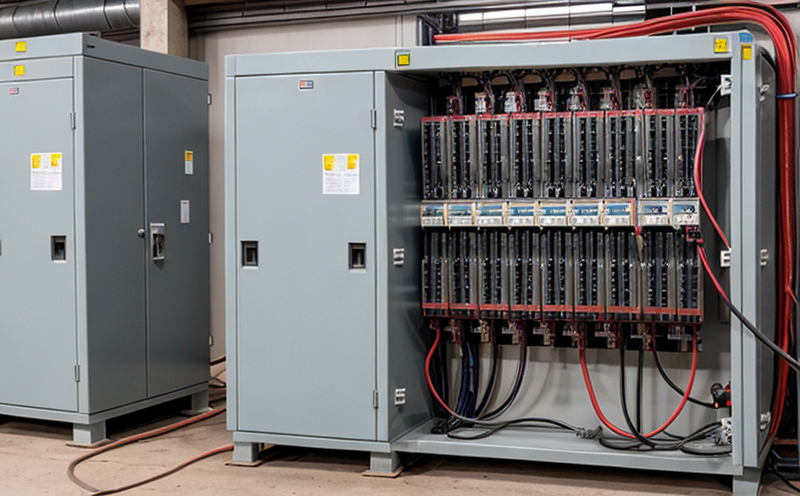ASTM D4059 PCB Content Testing in Transformer Oils
The ASTM D4059 standard provides a method to determine the presence of polychlorinated biphenyls (PCBs) in transformer oils. This is crucial for ensuring the safety and reliability of electrical equipment within the power and utilities sector, particularly transformers used in substations. PCBs were widely used as coolants and dielectric fluids until their production was banned by international agreements due to environmental concerns.
Transformer oil serves multiple purposes: it acts as an insulator between conductive parts, helps dissipate heat from the core, and prevents arcing within the transformer windings. The presence of PCBs in these oils can be problematic because they are persistent organic pollutants (POPs) that bioaccumulate and persist for long periods in the environment.
ASTM D4059 outlines a procedure to accurately measure the concentration levels of PCBs in used transformer oil by utilizing gas chromatography with a specific detection technique. This method is essential for compliance with environmental regulations, such as those enforced by EU's Restriction of Hazardous Substances (RoHS) directive and the US Environmental Protection Agency's (EPA) guidelines.
The testing process involves several critical steps:
- Sampling: A representative sample is taken from the transformer oil reservoir. This ensures that the analysis reflects the overall PCB content in the system.
- Preparation: The sample undergoes a series of purification and concentration procedures to ensure accurate measurement. This step removes any contaminants or impurities that could interfere with the gas chromatography process.
- Analysis: Gas chromatography is performed using flame ionization detection (GC-FID). GC-FID provides precise quantification by identifying individual PCB congeners, which are uniquely characterized by their molecular structure and chlorine substitution pattern.
The results of this test help in assessing the condition of transformers and ensuring they meet regulatory standards. This is particularly important for aged transformers where degradation may lead to increased PCB levels over time.
In summary, ASTM D4059 testing is vital for monitoring environmental compliance, ensuring equipment longevity, and preventing potential risks associated with PCB exposure.
Why It Matters
The importance of ASTM D4059 testing in transformer oils cannot be overstated. The presence of PCBs poses significant challenges both from an operational standpoint and environmentally. From a practical perspective, high PCB levels can lead to reduced insulation effectiveness, increased risk of arcing, and potential damage to winding materials over time.
On the environmental front, PCBs are known for their toxicity and persistence in the environment. They accumulate in soil, water bodies, and living organisms, leading to long-term ecological impacts. Compliance with regulatory standards is thus not only a matter of corporate responsibility but also legal obligation.
The testing process outlined by ASTM D4059 ensures that transformers operate efficiently while minimizing environmental impact. It allows for the early detection of potential issues related to PCB accumulation and provides actionable data for maintenance decisions.
In essence, this test serves as a critical tool in the ongoing efforts to balance operational efficiency with environmental stewardship within the power & utilities sector.
Scope and Methodology
The ASTM D4059 method is designed specifically for determining the concentration of polychlorinated biphenyls (PCBs) in transformer oils. This scope includes transformers that have been in service for extended periods, as well as those that are newly installed but sourced from facilities known to use PCB-containing materials.
The methodology involves several key steps:
- Sampling: Representative samples are collected from the oil reservoirs of transformers. This ensures that the analysis accurately reflects the overall PCB content in the system.
- Purification and Concentration: The sample undergoes purification to remove any contaminants or impurities. It is then concentrated for more precise measurement using a solvent extraction process.
- Analysis: Gas chromatography with flame ionization detection (GC-FID) is used to identify and quantify individual PCB congeners. This technique provides detailed information about the specific types of PCBs present, their concentrations, and their overall impact on the transformer's performance.
The results are reported in parts per million (ppm), which allows for easy comparison against regulatory thresholds and internal standards.
This meticulous approach ensures that transformers meet stringent environmental and operational requirements, contributing to a safer and more sustainable power infrastructure.
Use Cases and Application Examples
The ASTM D4059 test finds application in various scenarios within the power & utilities sector:
- New Transformer Installation: Before commissioning, it is essential to verify that new transformers do not contain harmful levels of PCBs. This prevents potential contamination from old materials.
- Maintenance and Overhauls: Periodic testing helps in monitoring the condition of transformers over time. Any increase in PCB concentration can indicate degradation or improper maintenance practices.
- Environmental Compliance: Regulatory bodies require regular testing to ensure compliance with national and international standards, such as those set by RoHS and the EPA.
In addition, this test is crucial for identifying potential risks associated with PCB exposure. By detecting these compounds early on, utilities can take proactive measures to mitigate risks and avoid costly repairs or replacements.
An example of a real-world application involves a utility company that regularly tests its transformers to ensure they meet the stringent requirements set by environmental authorities. Through consistent monitoring, they have been able to identify and address issues before they escalate into more significant problems.





